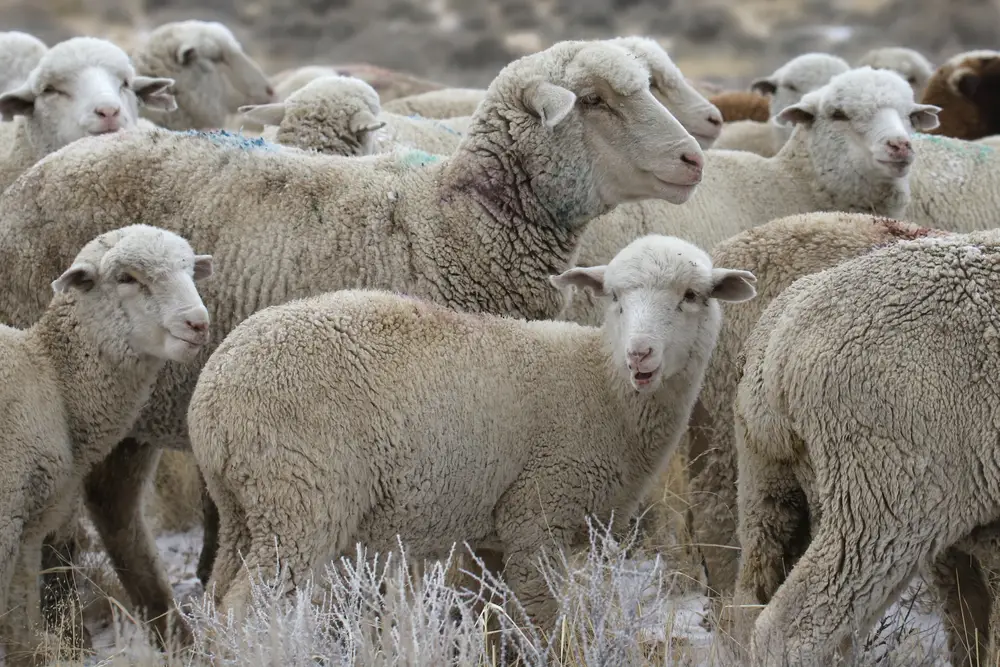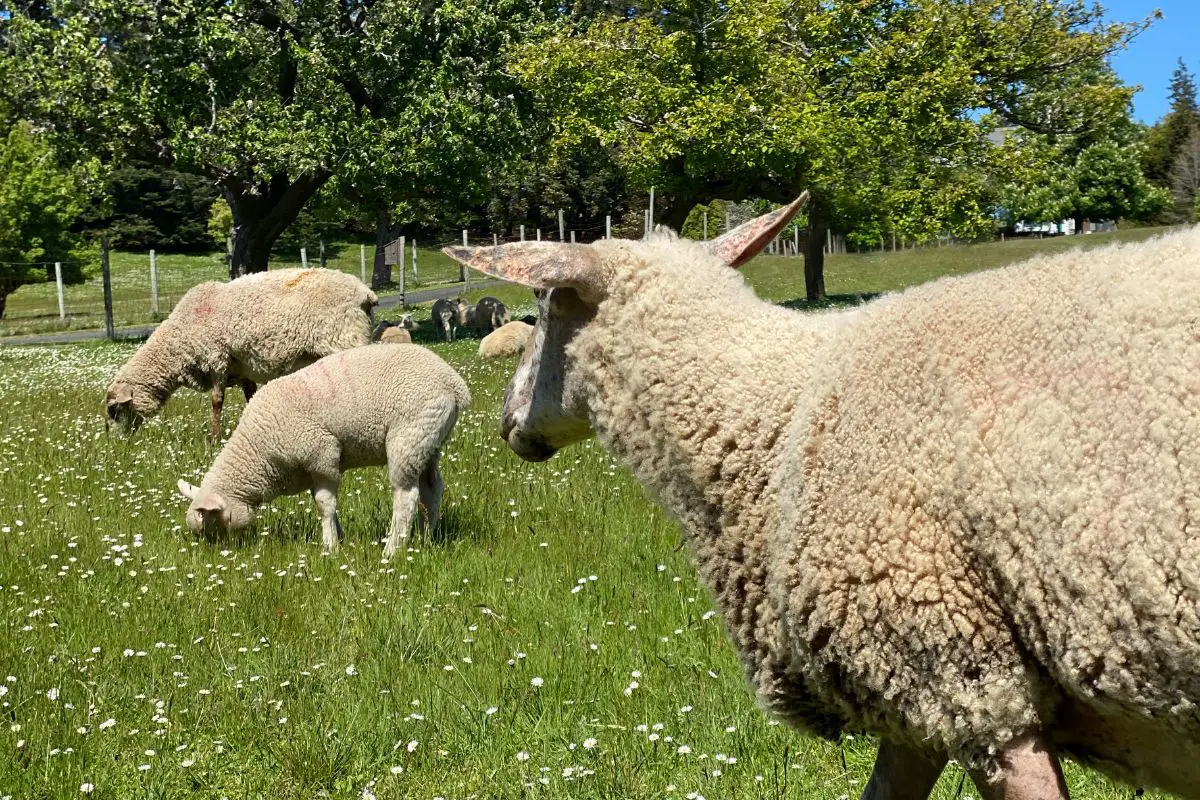The Columbia breed is a dual-purpose breed of sheep with white fleece that has been around for over 100 years. The Columbia sheep is known as the largest domestic sheep native to the United States.
They are a fast growing, popular breed with a rich history and are one of the best success stories of the USDA, who were responsible for their creation.
In this article, we will delve into the history behind this magnificent breed, and cover their breed standards and wool characteristics in detail. If you are considering Columbia sheep for your farm, we will also list the benefits of raising Columbia sheep.
Table of Contents
Where do Columbia Sheep Come From?
Columbia sheep were created through a breeding program by the United States Department of Agriculture who were seeking to create a breed that could tolerate the western ranges.
They wanted a dual-purpose wool breed of sheep that could produce more pounds of lamb and pounds of wool than other breeds.
The original cross involved Rambouillet ewes and Lincoln rams and the breeding program began in Laramie, Wyoming in 1912.
After seeing promise from this cross-breeding of Lincoln/Rambouillet sheep, the program was moved to Dubois, Idaho in 1918 where the animal sciences team at the Sheep Experiment Station took over.
They succeeded in their goal of producing a breed that not only thrived in range conditions, but in grassland, and provided plentiful fleece and meat which meant they would be profitable for farming.
What are the Characteristics of the Columbia Sheep?
The breed standards for this All-American sheep breed are set forth by the Columbia Sheep Breeders Association:
| Ram weight | 250 to 350lbs |
| Ewe weight | 160 to 260lbs |
| Hoove color | Black or white |
Columbia rams and Columbia ewes should both be large, have good balance and be polled, with long ears, and a white face that is free from wool. Some speckles of color are allowed on the face and tips of the ears.

The neck of the Columbia sheep should be short and without wrinkles with wide shoulders and a broad chest beneath. Their legs should have strong boning and be set well underneath their body, with white hair below the wool line.
While some people may confuse the Columbia sheep with Corriedale sheep as they have a similar appearance, Corriedale’s are noticeably smaller in size.
What Kind of Fleece does the Columbia Sheep Produce?
Columbia sheep produce heavy fleece in high quantities due to their larger body size.
| Yield | 45 to 55 percent |
| Fleece Weight | 12lbs to 16lbs |
| Staple Length | 4″ to 6″ |
| Count | 54’s to 62’s |
| Thickness | 23 to 29 microns |
Their fleece results in a white medium wool with a strong financial return for their owners.
Why Should You Raise Columbia Sheep?
There are many reasons why Columbia sheep are a popular choice for both commercial farming operations and small farms:
- Columbia sheep were developed by the USDA
- Strict breed standards have been maintained
- Columbia sheep have a high yield fleece and are good for wool production
- Staple length is fairly long and consistent
- Columbia sheep have excellent lean and muscular bodies good for meat production
- They do not have wool blindness
- They are polled leading to lower maintenance
- Columbia ewes have strong mothering instincts and produce plentiful milk
- They are adaptable to lush grass and farming outside of ranges

